What is Machine Learning?
Machine Learning (ML) is a branch of artificial intelligence (AI) that enables computers to learn from data and improve their processing capabilities over time without detailed programming. In other words, ML allows computers to “learn” from experience to gradually enhance the accuracy of predictions, similar to how humans learn from real-world experience.
What is Machine Learning?
Machine Learning (ML, also known as machine learning) is a branch of artificial intelligence (AI) focused on enabling computers to simulate human learning to automatically perform tasks and improve performance by accumulating experience from data. Simply put, it is "the field of study that gives computers the ability to learn without being explicitly programmed," according to the classic definition by expert Arthur Samuel from the 1950s. This definition remains valid today: instead of programming every specific instruction, we provide data for the machine to infer rules and gradually improve results over time.
The field of study that gives computers the ability to learn without being explicitly programmed.
— Arthur Samuel, Computer Scientist (1950s)
Today, machine learning is widely present in everyday life. Many online services we use daily – from Internet search engines, spam email filters, movie/product recommendation systems, to banking software detecting unusual transactions – are powered by machine learning algorithms.
Search Engines
Intelligent ranking and personalized results
Spam Detection
Automatic email filtering and security
Recommendations
Personalized content and product suggestions
This technology also appears in many mobile applications, such as voice recognition features that allow virtual assistants to understand your speech. Thanks to its ability to learn and improve, machine learning has become the foundation of most modern AI systems. In fact, most AI advancements in the past 5–10 years are closely linked to machine learning, to the point that many people even consider AI and ML almost synonymous.
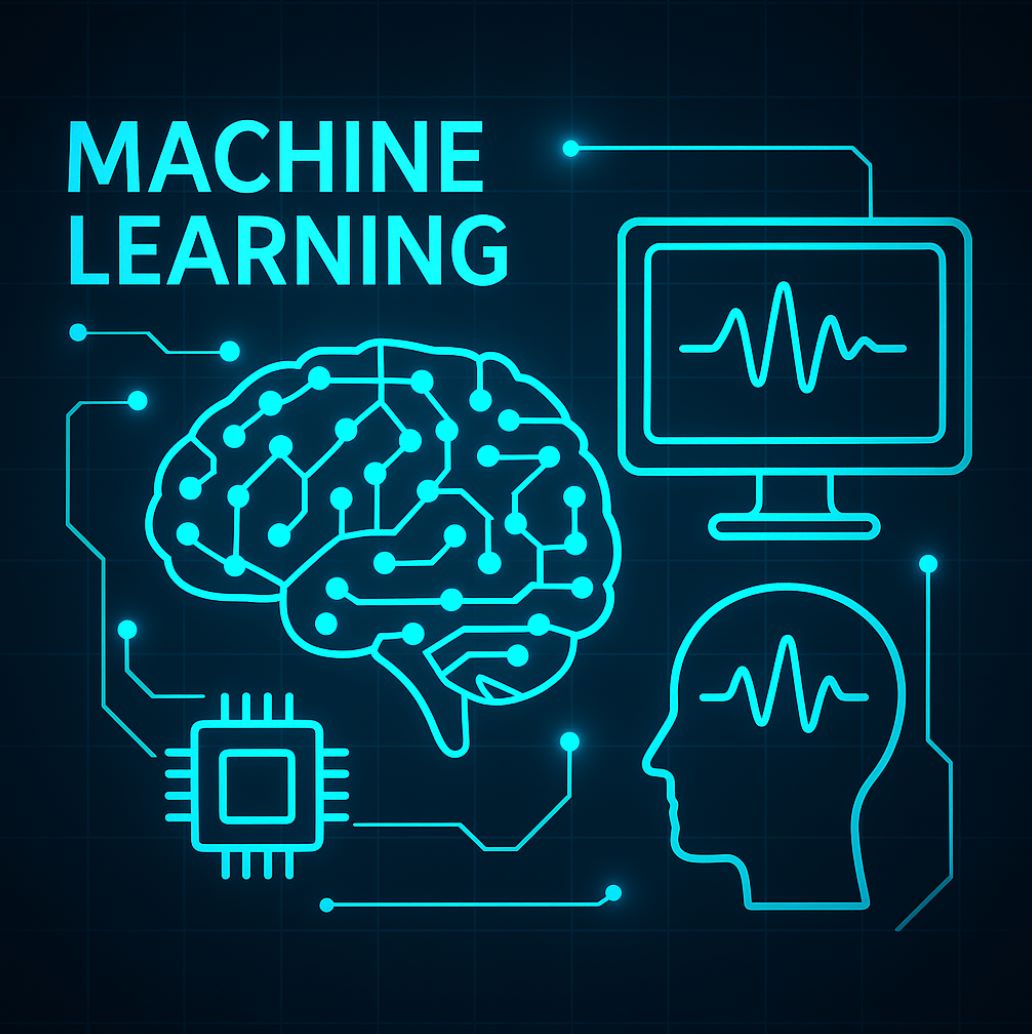
The Relationship Between Machine Learning, AI, and Deep Learning
Artificial Intelligence (AI) is a broad concept encompassing all techniques that enable machines to perform "intelligent" behaviors like humans. Machine Learning is a method to realize AI by allowing machines to learn from data instead of being explicitly programmed step-by-step. Within the AI ecosystem, ML plays such a prominent role that many AI systems are essentially built on machine learning models.
Rule-Based Systems
- Explicit step-by-step programming
- Fixed rules and logic
- Limited adaptability
Data-Driven Learning
- Learns patterns from data
- Improves over time
- Adapts to new situations
Deep Learning is a special subfield of machine learning. Deep learning uses multi-layer artificial neural networks (deep neural networks) to automatically extract features from raw data with minimal human intervention. Thanks to its multi-layer structure, deep learning algorithms can process massive amounts of data (e.g., images, audio, text) and learn important features for classification or prediction without requiring programmers to provide those features in advance. This reduces the effort of "teaching" the machine and leverages large-scale data for the model.
Artificial Intelligence
Machine Learning
Deep Learning
Conversely, "classical" ML algorithms (not using deep learning) often depend heavily on human-designed input features and require more structured data processing to achieve good results. You can imagine AI as a broad set of smart technologies, machine learning as a subset of AI, and deep learning as a subset of machine learning – focusing on deep neural network models.
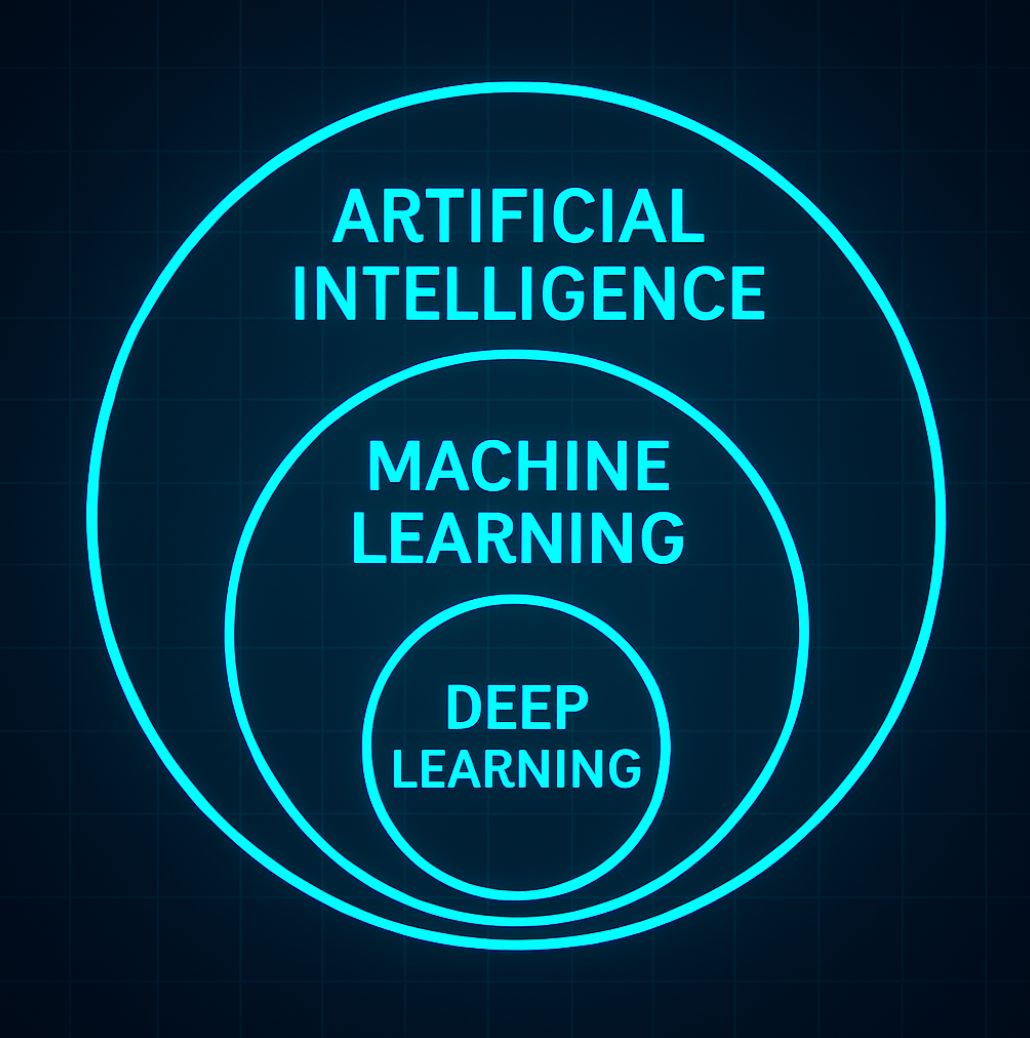
Types of Machine Learning
There are many different methods and algorithms in machine learning. Fundamentally, ML is divided into four main types based on how the system learns from data:
Supervised Learning
Supervised learning is a method of training models using labeled data. This means the input data already has known expected outcomes, helping the algorithm learn from specific examples. The model adjusts internal parameters to predict outputs matching the given labels. For example, if we provide the algorithm with many labeled images of dogs/cats, the model learns from these images to accurately distinguish dog images from non-dog images. Supervised learning is the most common type of machine learning today, used in countless tasks such as handwriting recognition, spam email classification, or real estate price prediction.
Image Classification
Recognizing objects in photos
Email Filtering
Spam detection and classification
Unsupervised Learning
With unsupervised learning, the input data has no labels. The algorithm automatically searches for hidden patterns and structures in the dataset without prior guidance. The goal is for the machine to discover groups of data or underlying rules that humans may not yet know. For example, an unsupervised learning program can analyze online shopping data and automatically cluster customers into groups with similar purchasing behaviors.
This clustering helps businesses understand different customer segments even though no specific "customer type" labels existed before. Unsupervised learning is often applied in visitor data analysis, dimensionality reduction, and recommendation systems.
Customer Segmentation
Grouping customers by behavior patterns
Market Analysis
Discovering hidden market trends
Semi-supervised Learning
Semi-supervised learning combines both labeled and unlabeled data during training. Usually, only a small portion of data is labeled, while most remain unlabeled. Semi-supervised algorithms use this small labeled dataset to guide classification and feature extraction on the larger unlabeled dataset. This approach leverages the vast amount of unlabeled data without requiring extensive manual labeling.
Semi-supervised learning is especially useful when collecting labeled data is difficult or costly, improving accuracy compared to purely unsupervised learning.
Reinforcement Learning
Reinforcement learning is a method where algorithms learn through a reward/punishment mechanism by interacting with the environment. Unlike supervised learning, the model is not given pairs of input-output data but experiments with different actions and receives feedback (rewards or penalties) based on the success of those actions.
Over time, sequences of actions that yield good results are "reinforced", helping the model gradually learn an optimal strategy to achieve a set goal. Reinforcement learning is often used to train AI for playing games, controlling robots, or teaching self-driving cars.
A famous example is the IBM Watson system – which used reinforcement learning to decide when to answer and how much to wager, ultimately winning the Jeopardy! quiz show in 2011.
— IBM Watson Achievement
Game AI
Learning optimal strategies through gameplay
Robotics
Autonomous navigation and control
Autonomous Vehicles
Self-driving decision making
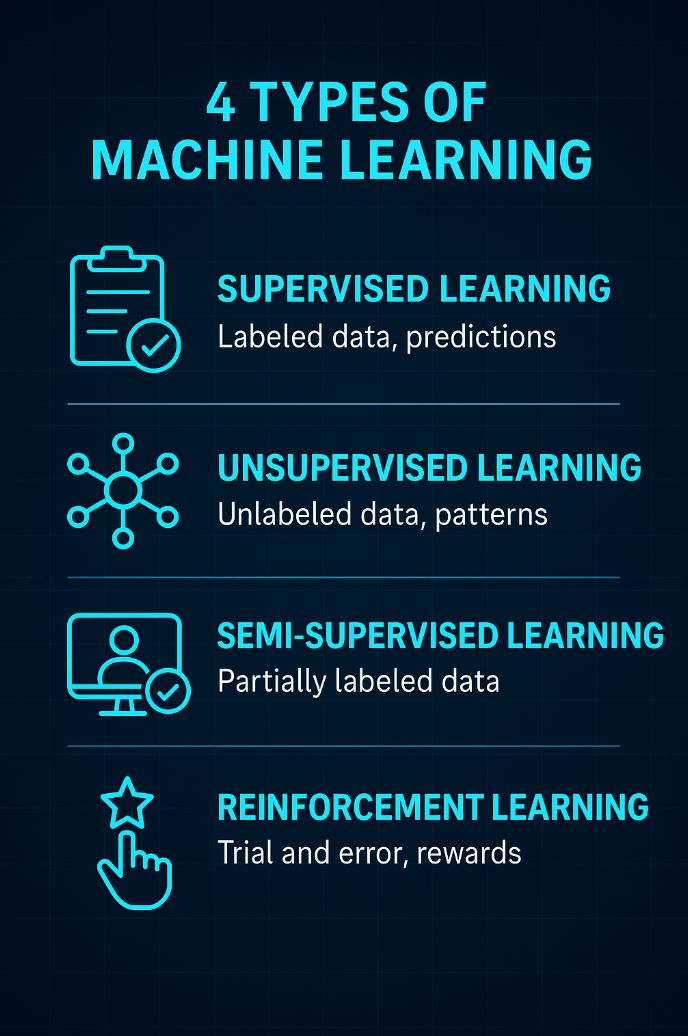
How Machine Learning Works
Machine Learning operates based on data. First, the system needs to collect a large and diverse dataset from various sources (sensors, transaction systems, social networks, open databases, etc.). Data quality is crucial: if the data is noisy, incomplete, or unrepresentative, the ML model may learn incorrectly and produce inaccurate results.
Data Collection & Preprocessing
First, identify input data and collect it from reliable sources. Then, the data is cleaned, errors removed, missing values filled, or input information normalized. This step takes significant time but greatly influences the final model accuracy.
- Identify and collect data from reliable sources
- Clean data and remove errors
- Fill missing values and normalize inputs
- Ensure data quality and representativeness
Algorithm Selection & Model Training
Based on data type and goal (classification or prediction), select a suitable algorithm (e.g., linear regression, decision trees, neural networks, etc.). The processed training data is fed into the model to learn by optimizing a loss function. Training adjusts model parameters to minimize prediction errors on the training dataset.
- Choose appropriate algorithm for the task
- Feed training data into the model
- Optimize loss function parameters
- Minimize prediction errors
Evaluation & Deployment
After training, the model is tested on new data (test set) to assess quality. Common metrics include accuracy, Precision, Recall, or F1-Score, depending on the task. If results meet requirements, the model is deployed in real applications or services; otherwise, data or algorithms may be adjusted and retrained.
- Test model on new data (test set)
- Measure accuracy, precision, recall
- Deploy if results meet requirements
- Adjust and retrain if necessary
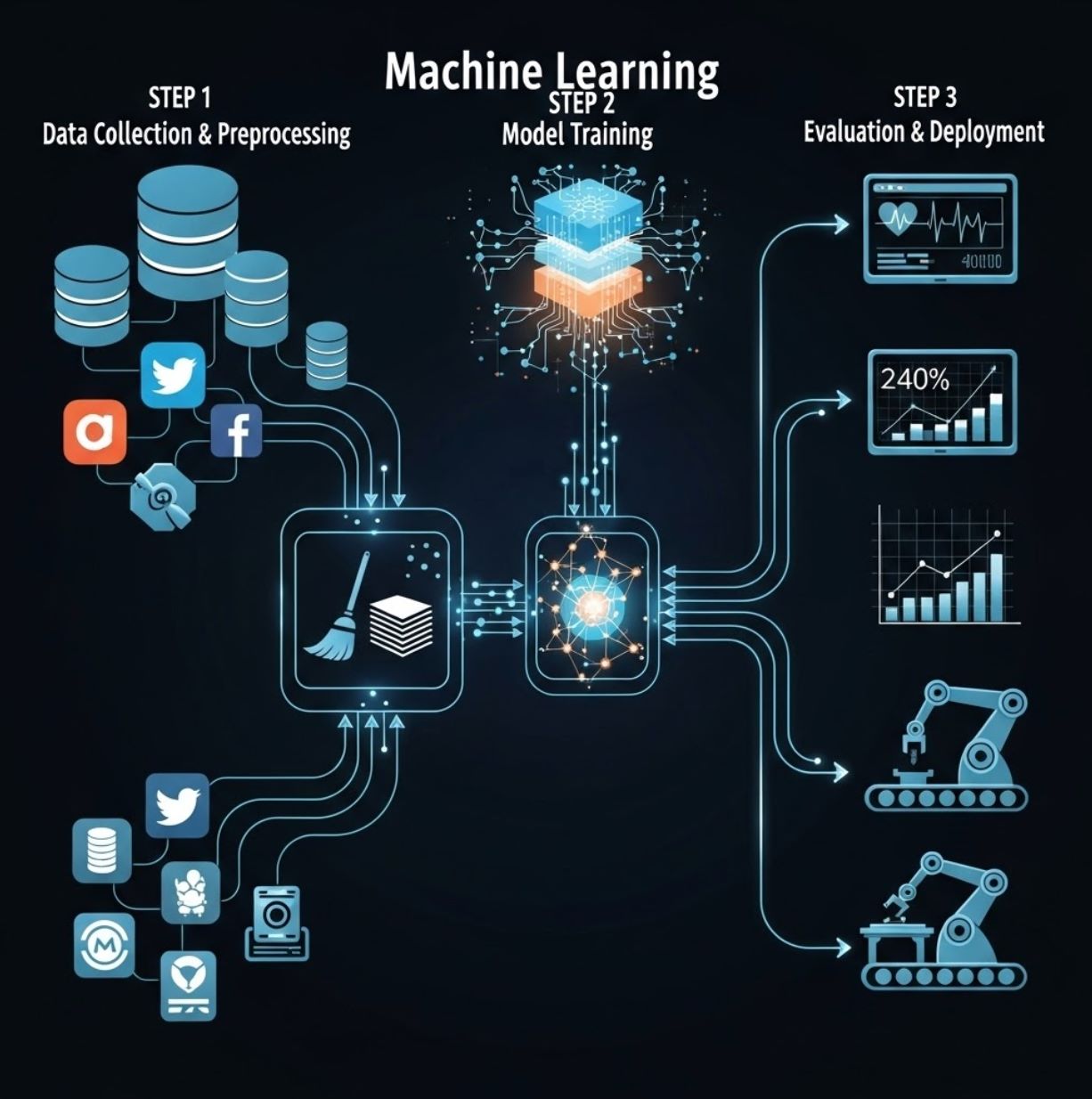
Practical Applications of Machine Learning
Machine learning is widely applied in real life, from everyday conveniences to high-tech fields. Below are some typical examples of ML applications:
Generative AI
Speech Recognition
Chatbots and Customer Support
Computer Vision
Recommender Systems
Fraud Detection
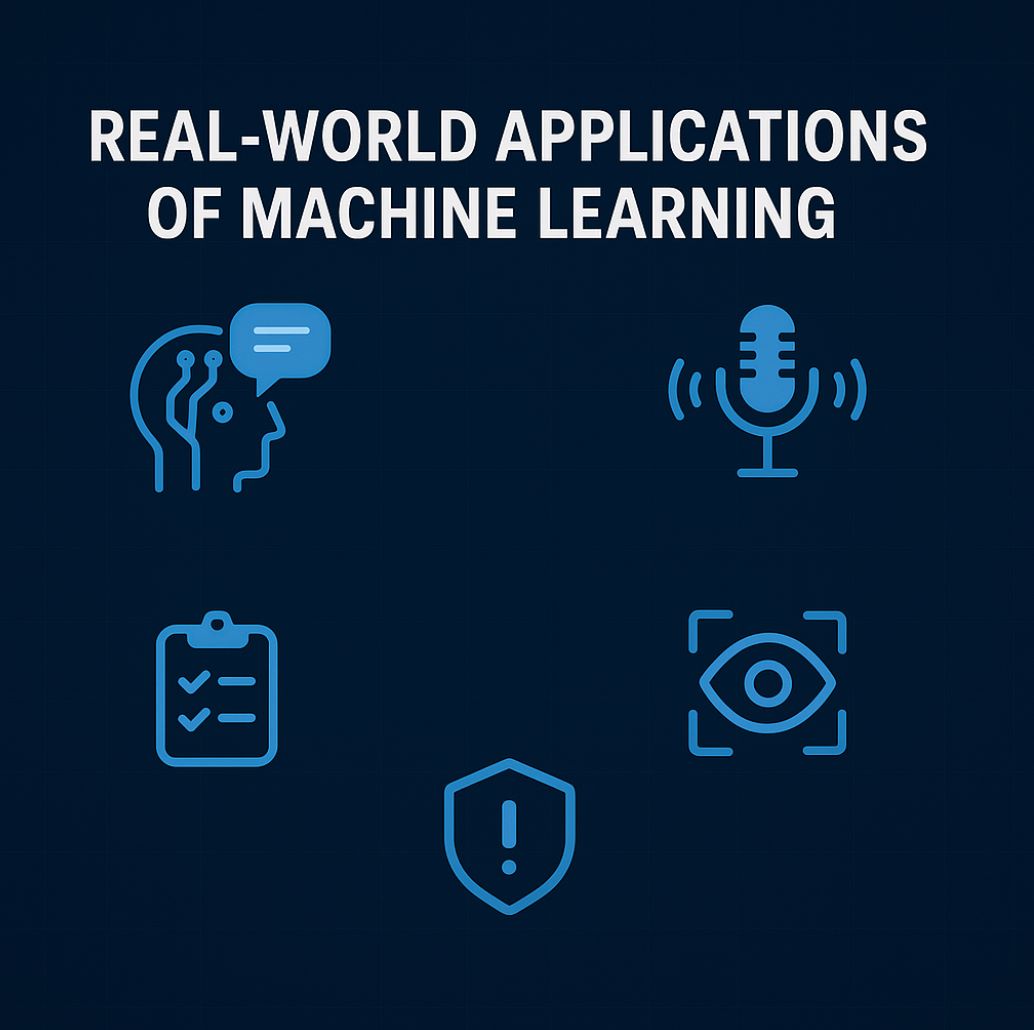
Advantages and Limitations of Machine Learning
Like other technologies, machine learning has notable advantages but also certain limitations. Understanding these helps us apply ML effectively and avoid potential risks.
Key Benefits
- Ability to find patterns in large data: ML can detect hidden patterns and trends in massive datasets that are difficult for humans to spot. This enables businesses to extract insights from "big data" for more accurate decision-making.
- Automation and reduced human dependency: ML systems can learn and improve analytical algorithms with minimal human intervention. By simply providing input data, the model can automatically "assemble" and tune internal parameters to optimize results. This allows automation of complex tasks (such as classification, prediction) continuously without manual programming for each case.
- Improvement over time & personalized experience: Unlike traditional software (with fixed performance), machine learning models improve accuracy as they process more data. With each additional training, models gain experience and make better predictions. This enables ML systems to customize for individual users – for example, recommending content increasingly aligned with viewer preferences – and enhance user experience over time.
Key Challenges
- Dependence on data quality: ML models require very large training datasets that must be accurate, diverse, and unbiased. Poor-quality data leads to poor results ("garbage in, garbage out" principle). Moreover, collecting and processing massive data requires robust storage and computing infrastructure, which can be costly and resource-intensive.
- Risk of learning errors or biased results: ML models can fail seriously if training data is insufficient or unrepresentative. In some cases, with very small datasets, algorithms may find mathematically "plausible" but practically wrong rules. This causes models to produce biased or misleading predictions, negatively impacting decisions based on them. Therefore, it is crucial to carefully verify ML result reliability, especially when input data is limited.
- Lack of transparency: Many complex ML models (especially deep learning) operate as a "black box" – making it very difficult to explain why a model made a particular prediction. For example, a deep neural network with millions of parameters may achieve high accuracy, but it is hard to know which features led to the decision. This lack of explainability poses challenges in fields requiring result accountability (such as finance, healthcare). Conversely, some simpler models (e.g., decision trees) are easier to verify and interpret because their decision logic can be traced – an advantage that "black box" neural networks lack.
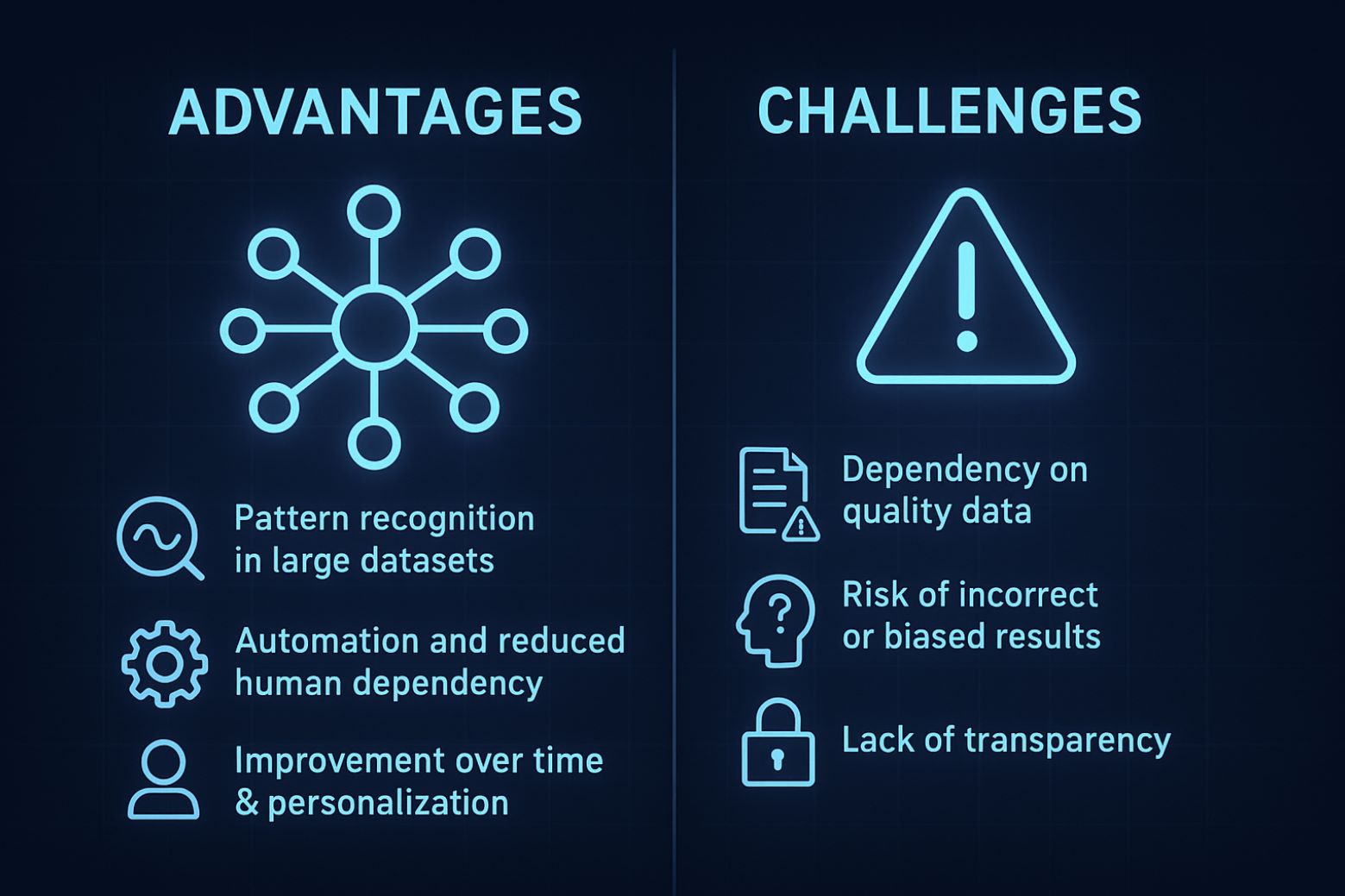
Conclusion
In summary, Machine Learning is a key technology in the era of big data. It enables computers to learn and improve prediction capabilities over time without detailed step-by-step programming. As a result, ML has been and continues to be widely applied in life and industry, from intelligent virtual assistants to advanced automated systems.
Machine Learning is the tool that helps humans fully exploit the value of data in the digital age, opening many opportunities for smart technology applications in the future.
— INVIAI Insight




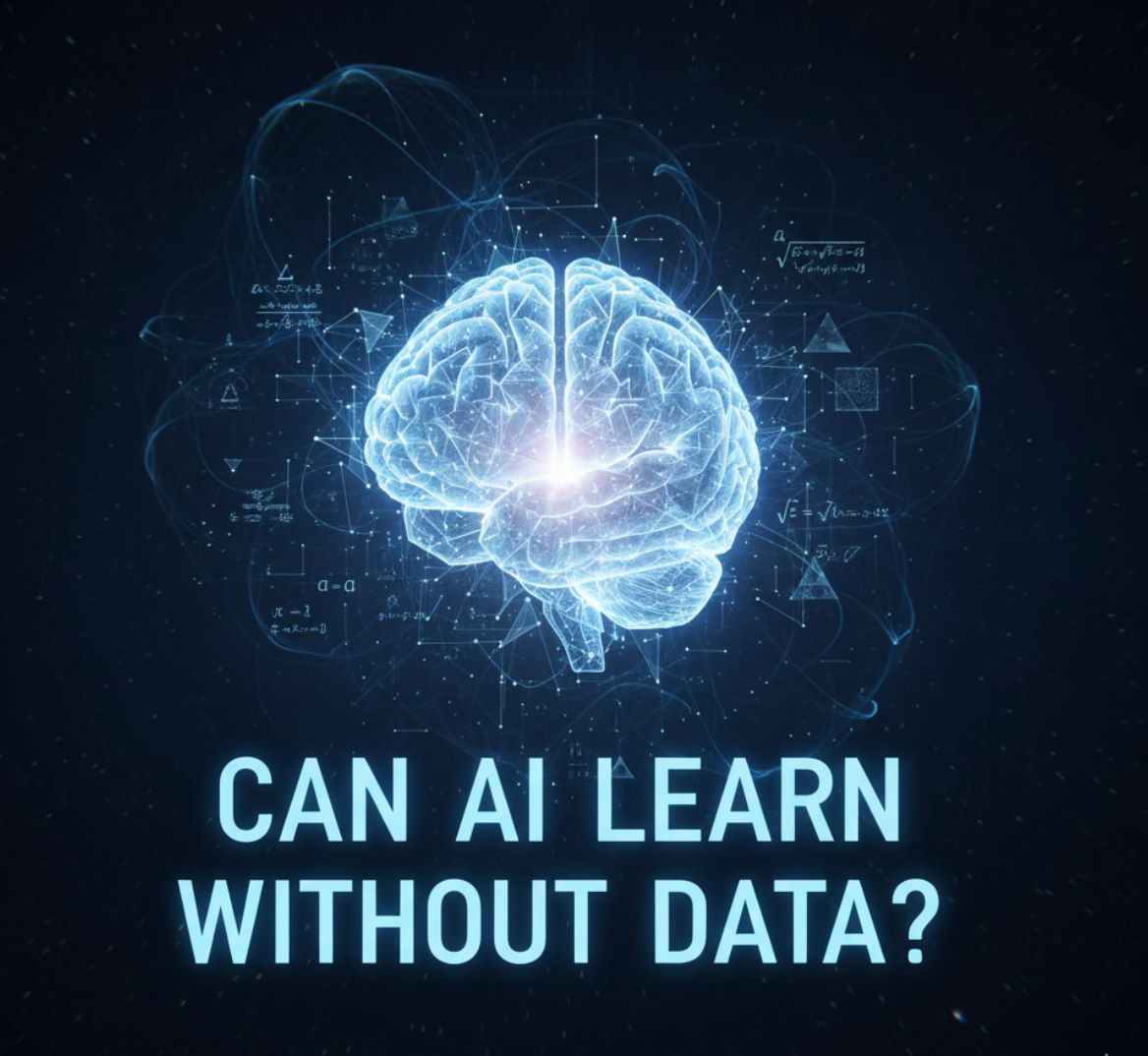
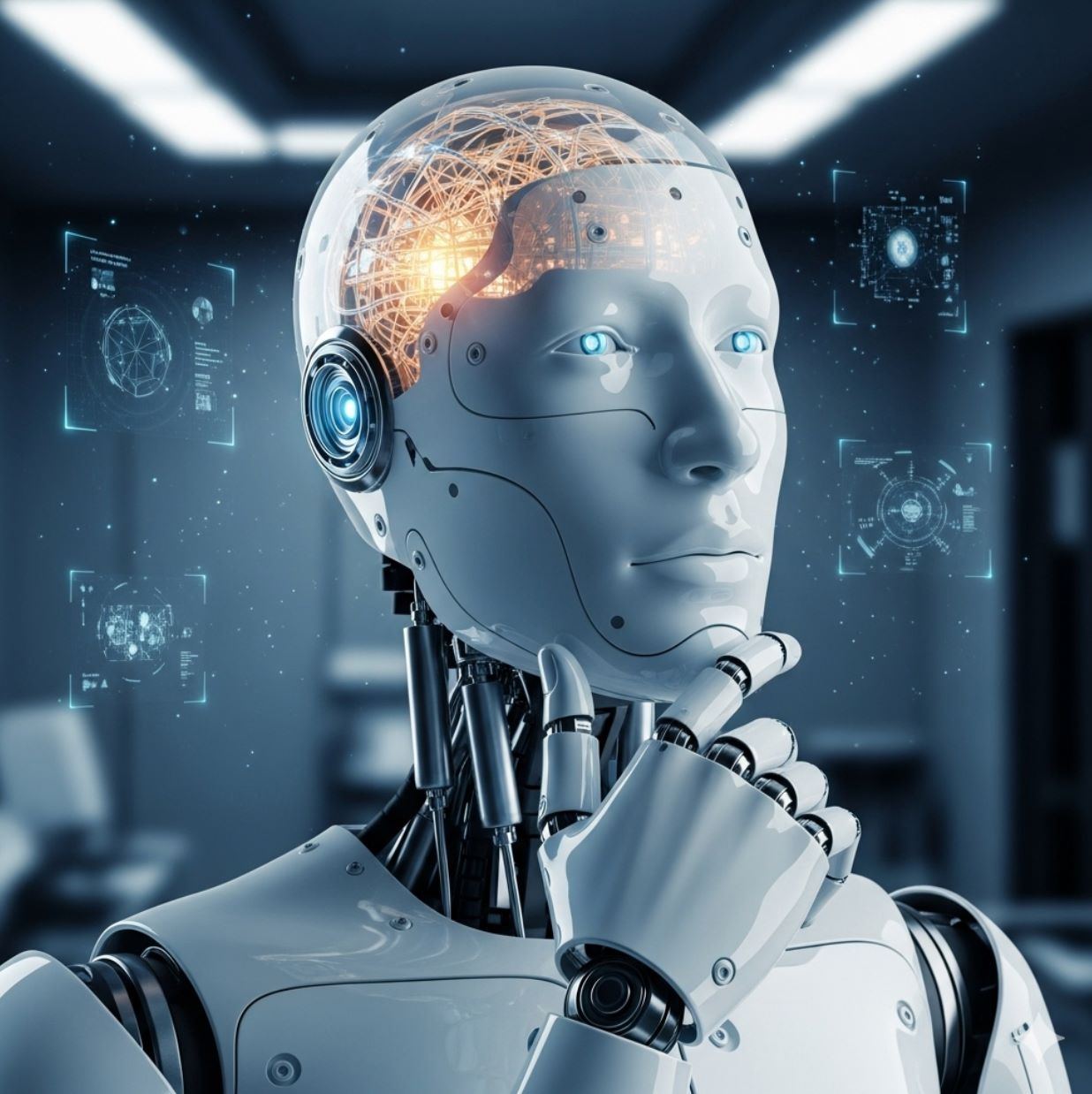
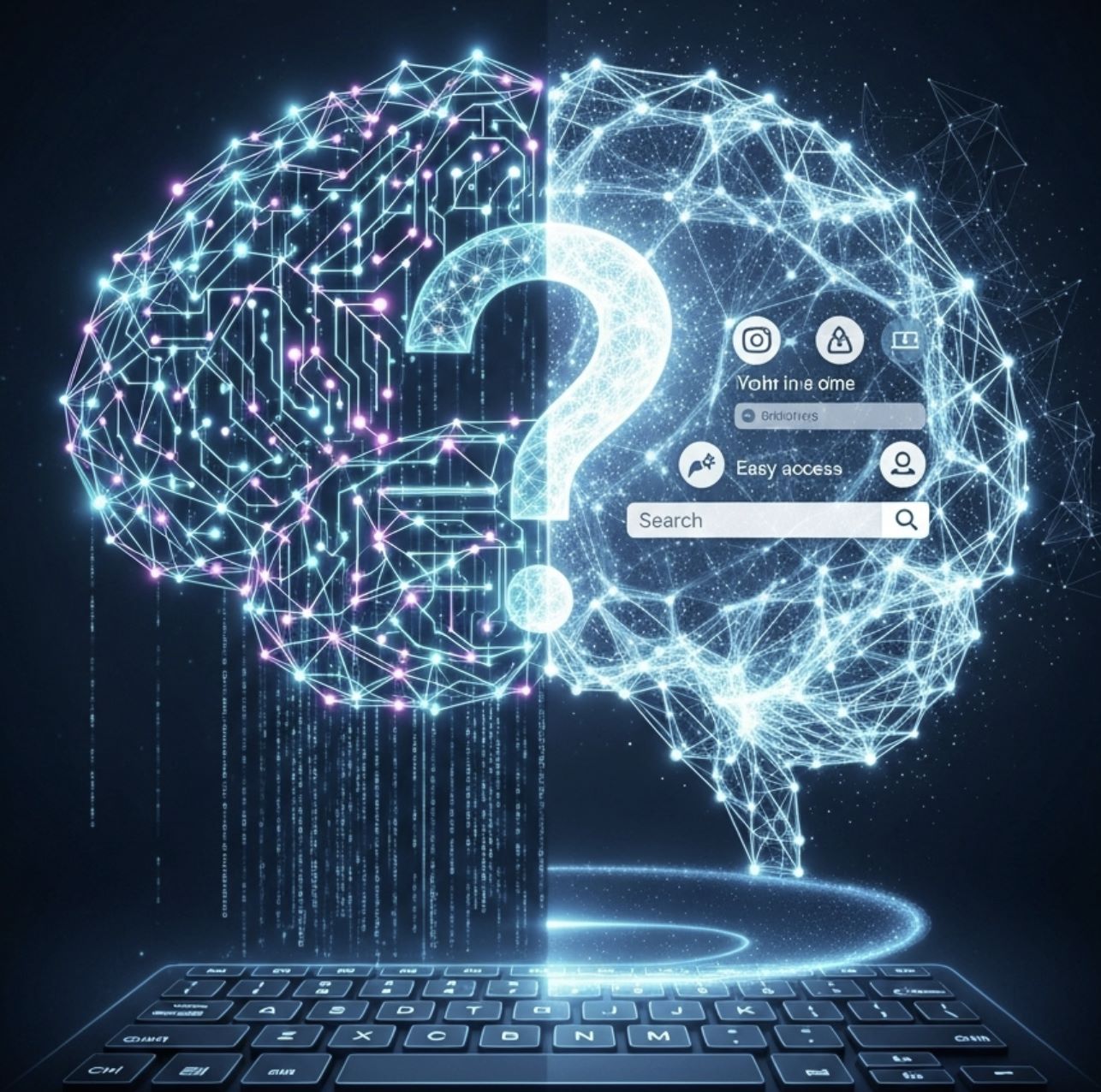
Comments 0
Leave a Comment
No comments yet. Be the first to comment!